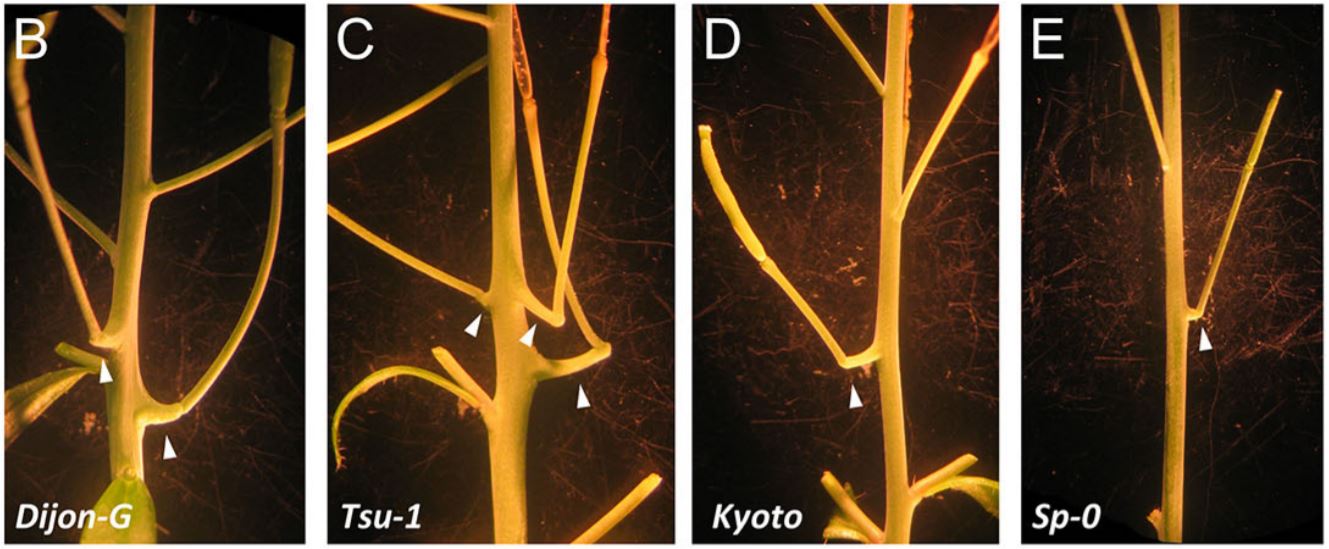One of the best studied plants in science is a small, unassuming weed. Thale cress, or Arabidopsis thaliana, is a model organism, which basically makes it the lab rat of the plant world.
Therefore, it's quite surprising that researchers have found a whole new part of the Arabidopsis plant which we'd somehow missed for over 100 years.
Even if you're not a plant scientist, you probably know what thale cress looks like. The weed is native to Europe, Asia, and Africa, where it will happily sprout in sandy soils or even just gaps in concrete.
In the science world, it's been a fabulous plant genetics workhorse for decades. A. thaliana was the first plant to have its genome sequenced, it has been grown on the International Space Station, attempted to be grown on the Moon, and has even helped us study ourselves.
This newly discovered structure, which the team has called a 'cantil', isn't hidden or too small to see. Typically, the flower-bearing stalk grows out of the main stem of the plant; by contrast, a cantil juts out horizontally from the stem, holding the flower stalk farther out - much like its architectural namesake, the cantilever.
As you can see below, it's not super easy to miss – but it's rare, and you're unlikely to see cantils on the thale cress you see on the side of the road.

The reason we've only just discovered these structures is that cantils are incredibly rare, forming only if the plant has been forced to hold off flowering, as it does when sunlight is limited by shorter days.
"I first observed the cantils in 2008," said plant biologist Timothy Gookin from Pennsylvania State University.
"I initially didn't trust any of the results; I thought it must be an artifact of genetic contamination, perhaps combined with environmental contamination of the water, soil, fertilizer or even the building air supply."
When we mess with a plant the way Arabidopsis has been, you can get some weird stuff. Mutations can make the plants smaller, taller, create double flowers, heat tolerance, and lots more.
But it turns out that cantils weren't created from a mutation or contamination; instead, cantils only form at the time the plant begins to flower, and only after the plant has been delayed flowering in the first place – usually due to short days.
"It took over 12 years of experimentation to really get a grasp on what we were seeing and to understand how cantils were regulated. This study required the growth of 3,782 plants to full maturity and the manual inspection of over 20,000 flower-bearing stalks in 34 unique plant lines," explained Gookin.
"I finally deemed the cantils a natural phenomenon after identifying them in wild-type (non-mutant) plants from different sources, which were growing in independent locations and diverse conditions."
That's not to say mutations can't make cantils form more or less frequently. Changing the genes like this meant that the team had more understanding of how the cantils do or don't form – finding that three heterotrimeric G proteins called GPA1, AGB1 and AGG3 all play independent roles in repressing particular components of cantil formation.
Why cantils happen, however, is still a mystery. We can expect yet more research on this hard-working lab plant to work out what's going on.
"One speculative interpretation is that the cantil represents a highly repressed ancestral linkage between different types of flowering plant architectures," said Gookin.
"The multiple layers of genetic and environmental factors that regulate cantil development are certainly quite striking."
The research has been published in Development.
#Nature | https://sciencespies.com/nature/scientists-have-studied-this-plant-for-over-100-years-they-just-found-a-new-part/
No comments:
Post a Comment